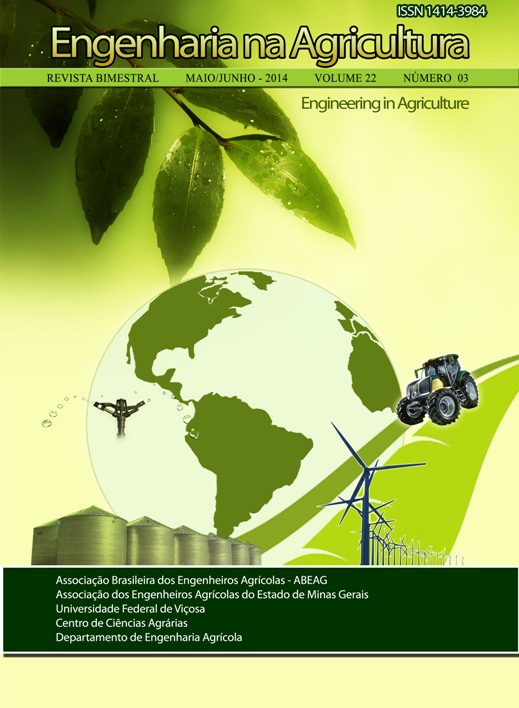PHYSICAL AND CHEMICAL QUALITY OF DRIED STRAWBERRY IN DIFFERENT PACKAGES - DOI: 10.13083/1414-3984.v22n04a03
DOI:
https://doi.org/10.13083/reveng.v22i4.554Keywords:
Fragaria ananassa Duch, desidratação, embalagem.Abstract
The strawberry has high perishability, and consequently reduced postharvest life. Thus, dehydration IS as an alternative to reduce post-harvest losses. The aim of this study was to evaluate the type of packaging and storage time on physical and chemical characteristics of dehydrated strawberry. We used strawberries of the cultivar ‘Oso Grande’, sorted, sanitized, cut transversely and dehydrated at a temperature of 60 ± 5 °C until reaching a moisture content of 20 ± 2% (wet basis). The packages evaluated were: transparent polyethylene bags measuring 0.087 microns thick and low density under vacuum without vacuum, and plastic cellophane. The physical and chemical analyses conducted were: moisture content, titratable acidity, soluble solids, pH, vitamin C, total and reducing sugars. The dehydrated strawberries were stored for 180 days at average room temperature (20 ± 2°C) with relative humidity of the air around 78 ± 2%. The experimental design was completely randomized in a 3x7x3 factorial, and the effect of storage time within each package was studied using the regression analysis. Packages were compared by the Tukey test at 5% of significance. Dehydration of the strawberry fruit showed to be an alternative to adding a new product on the market, presented a concentration of soluble solids and low moisture. Polyethylene bags under vacuum best retained the physical and chemical characteristics of the dehydrated strawberry, indicating its effectiveness as a barrier to absorption of moisture. Only the vacuum packaging was able to efficiently preserve the physical and chemical characteristics of the strawberry fruits for a period of 180 days.Downloads
Downloads
Published
How to Cite
Issue
Section
License
Authors who publish with this journal agree to the following terms:
The author(s) authorize(s) the publication of the text in the journal;
The author(s) ensure(s) that the contribution is original and unpublished and that it is not in the process of evaluation by another journal;
The journal is not responsible for the views, ideas and concepts presented in articles, and these are the sole responsibility of the author(s);
The publishers reserve the right to make textual adjustments and adapt texts to meet with publication standards.
From submission, the author is fully conceding the paper's patrimonial rights to the publication, but retaining the owner of its moral rights (authorship and paper's identification) according to Creative Commons Attribution-Noncommercial.








 Licensed by
Licensed by 